
Why we study physics?
- Subject:
- Education
- Physical Science
- Physics
- Material Type:
- Lecture
- Date Added:
- 09/05/2018

Why we study physics?
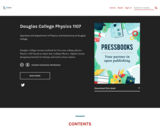
Short Description:
Douglas College custom textbook for first year college physics. Physics 1107 based on Open Stax College Physics. Algebra based, designed primarily for biology and earth science majors.
Word Count: 222181
(Note: This resource's metadata has been created automatically by reformatting and/or combining the information that the author initially provided as part of a bulk import process.)
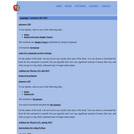
The Physics 205/206 and 210/211 sequences are intended for biology majors. If you're an engineering major, you should be in Physics 221. If you just need a gen ed class, you should be in Physics 130. Physics 205/206 satisfies your physics requirement if you're a biology major transferring to a Cal State. The prerequisites for 205 are Math 141 (precalculus) and Math 142 (trig). Physics 210/211 satisfies your physics requirement if you're a biology major transferring to a UC (or a Cal State). The prerequisites for 210 are Math 141 (precalculus) and Math 142 (trig), and the corequisite is Math 150A (calculus).

The online educational resource Physics For Everyone is the scaffolding for a 3 contact hour, 3 credit general education course that conveys the relevance, beauty, and power of physics as a foundation of science and technology in the public interest.
This slide deck provides the outline for the semester-long course. Each week’s lecture topics, with key points to be covered, are highlighted in two slides, which also list writing prompts, problem-solving exercises, and labs. Also, we have curated a list of high-quality online video resources that students (and instructors) should use to help them learn (and teach) physics ideas and concepts using demonstrations, animations, and humor. Many of those videos are parts of larger series and programs, created by some of the most skilled and popular online presenters in the world; that means some of their content is commercially sponsored, but all the content is free to students and instructors. Finally, we have envisioned this course so that students are assessed with a large set of low-stakes, just-in-time-type assignments and laboratory exercises.
This work has been generously supported by New America’s PIT-UN (Public Interest Technology University Network) challenge grant program, and is licensed under a Creative Commons Attribution-Noncommercial-Share Alike 4.0 License.

Together, this course and its predecessor, 8.05: Quantum Physics II, cover quantum physics with applications drawn from modern physics. Topics in this course include units, time-independent approximation methods, the structure of one- and two-electron atoms, charged particles in a magnetic field, scattering, and time-dependent perturbation theory. In this second term, students are required to research and write a paper on a topic related to the content of 8.05 and 8.06.
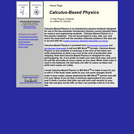
Calculus-Based Physics is an introductory physics textbook designed for use in the two-semester introductory physics course typically taken by science and engineering students.
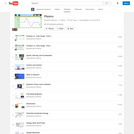
Series of videos that can be used in a Physics class created by Paul Anderson- Bozeman Science

Short Description:
This introductory, algebra-based, two-semester college physics book is grounded with real-world examples, illustrations, and explanations to help students grasp key, fundamental physics concepts. This online, fully editable and customizable title includes learning objectives, concept questions, links to labs and simulations, and ample practice opportunities to solve traditional physics application problems.
Word Count: 816528
(Note: This resource's metadata has been created automatically as part of a bulk import process by reformatting and/or combining the information that the author initially provided. As a result, there may be errors in formatting.)
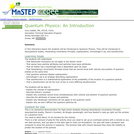
Introduction to Quantum Physics concepts with an activity demonstrating Heisenberg's Uncertainty Principle, wave/particle duality, Planck's Constant, de Broglie wavelength, and how Newton's Laws go right out the window on a quantum level.

These thoroughly illustrated sheets make use of multiple representations and can be used for unit-end summaries in inquiry-based/modeling-style courses as well as for direct instruction in didactic courses.
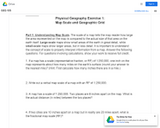
In-house assessments designed for use with a revised edition of Lumen Learning's Physical Geography textbook (https://courses.lumenlearning.com/chemeketa-geophysical/).
Catalog course description:
Focuses on the physical subsystems of the earth (atmosphere, biosphere, hydrosphere, and lithosphere), with emphasis on human-environment relations. Includes basic map skills, latitude/longitude, weather, climate, biogeography, volcanism, erosion, and desert landscapes.

This is a lesson plan for an activity about heart health and physical activity. Students will research, answer questions, and create a poster to present to the class about their type of physical activity.
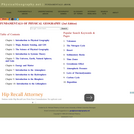
PhysicalGeography.net is an educational web portal that focuses on a specific area knowledge known as Physical Geography. Physical Geography is a sub-discipline of two much larger fields of study - Geography and Earth Sciences.

These lecture videos were made from home during the pandemic when most classes went online. They cover most of Physics-1 (mechanics), and a few chapters of physics-2. Subject: Physics Level: Community CollegeMaterial Type: LectureAuthor: Khalid BukhariDate Added: 09/17/2023

Short Description:
Note: This OpenStax book was imported into Pressbooks on July 26, 2019, to make it easier for instructors to edit, build upon, and remix the content. The OpenStax import process isn't perfect, so there are a number of formatting errors in the book that need attention. As such, we don't recommend you use this book in the classroom. This also means that, while the original version of this book is accessible, this Pressbooks copy is not. For information about how to get your own copy of this book to work on, see the Add Content part in the Pressbooks Guide. You can access the original version of this textbook here: University Physics Volume 2: OpenStax.
Long Description:
University Physics is a three-volume collection that meets the scope and sequence requirements for two- and three-semester calculus-based physics courses. Volume 1 covers mechanics, sound, oscillations, and waves. Volume 2 covers thermodynamics, electricity and magnetism, and Volume 3 covers optics and modern physics. This textbook emphasizes connections between theory and application, making physics concepts interesting and accessible to students while maintaining the mathematical rigor inherent in the subject. Frequent, strong examples focus on how to approach a problem, how to work with the equations, and how to check and generalize the result.
Word Count: 281083
ISBN: 978-1-947172-21-0
(Note: This resource's metadata has been created automatically as part of a bulk import process by reformatting and/or combining the information that the author initially provided. As a result, there may be errors in formatting.)

For all of the bodies attached to the many great minds that walk the Institute’s halls, in the work that goes on at MIT the body is present as an object of study, but is all but unrecognized as an important dimension of our intelligence and experience. Yet the body is the basis of our experience in the world; it is the very foundation on which cognitive intelligence is built. Using the MIT gymnastics gym as our laboratory, the Physical Intelligence activity will take an innovative, hands-on approach to explore the kinesthetic intelligence of the body as applicable to a wide range of disciplines. Via exercises, activities, readings and discussions designed to excavate our physical experience, we will not only develop balance, agility, flexibility and strength, but a deep appreciation for the inherent unity of mind and body that suggests physical intelligence as a powerful complement to cognitive intelligence.
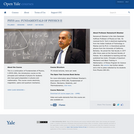
This is a continuation of Fundamentals of Physics, I (PHYS 200), the introductory course on the principles and methods of physics for students who have good preparation in physics and mathematics. This course covers electricity, magnetism, optics and quantum mechanics.
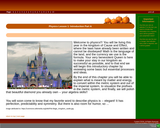
This lesson reviews basic concepts and math skills that are used throughout a physics course.

Short Description:
Note: The second edition of this book was published September 2019. You can find it here: Physical Geology - 2nd Edition. Physical Geology is a comprehensive introductory text on the physical aspects of geology, including rocks and minerals, plate tectonics, earthquakes, volcanoes, glaciation, groundwater, streams, coasts, mass wasting, climate change, planetary geology and much more. It has a strong emphasis on examples from western Canada, especially British Columbia, and also includes a chapter devoted to the geological history of western Canada. The book is a collaboration of faculty from Earth Science departments at Universities and Colleges across British Columbia and elsewhere.
Long Description:
Physical Geology is a comprehensive introductory text on the physical aspects of geology, including rocks and minerals, plate tectonics, earthquakes, volcanoes, glaciation, groundwater, streams, coasts, mass wasting, climate change, planetary geology and much more. It has a strong emphasis on examples from western Canada, especially British Columbia, and also includes a chapter devoted to the geological history of western Canada. The book is a collaboration of faculty from Earth Science departments at Universities and Colleges across British Columbia and elsewhere.
Word Count: 175085
ISBN: 978-1-989623-71-8
(Note: This resource's metadata has been created automatically by reformatting and/or combining the information that the author initially provided as part of a bulk import process.)